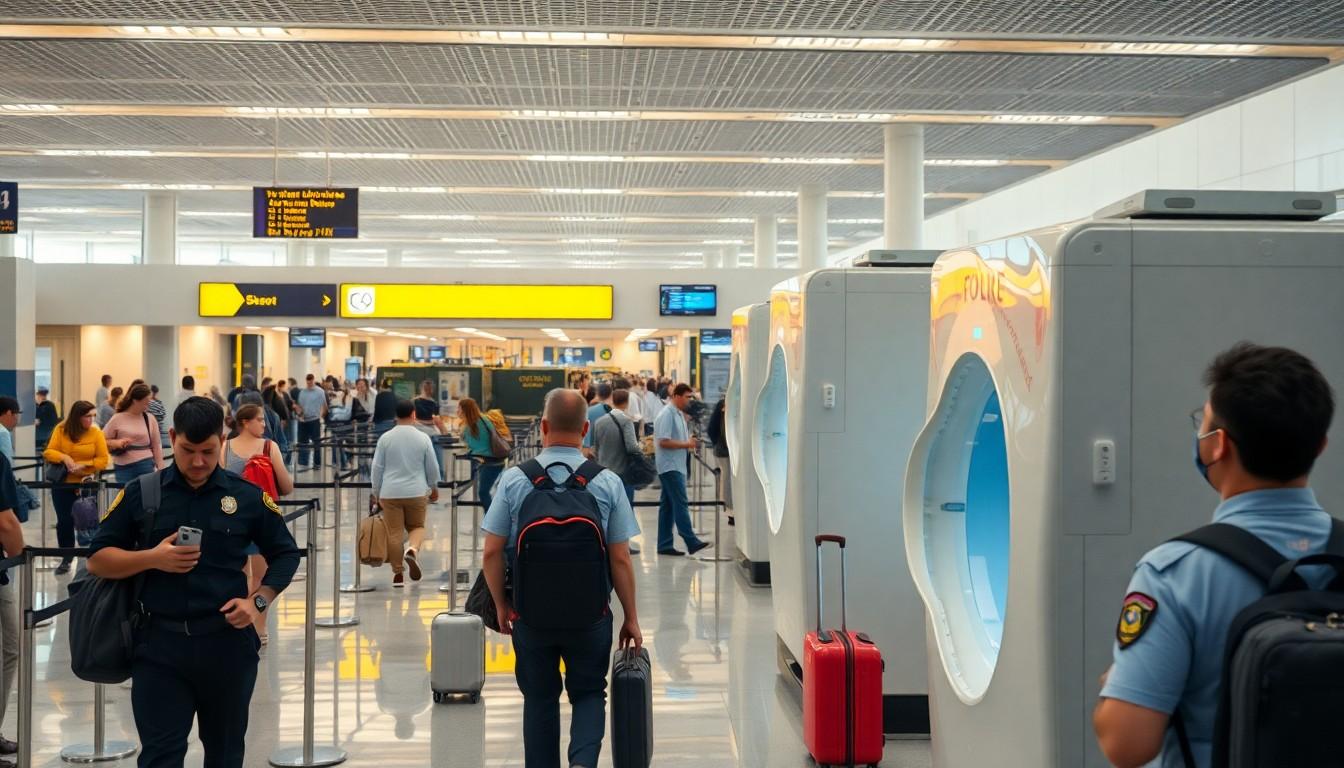Miami Airport News: Exciting Upgrades, New Routes, and Enhanced Security You Need to Know

Miami International Airport isn’t just a gateway to paradise; it’s a bustling hub where the latest news is as vibrant as the city itself. From flight updates to new dining options that could make even a seasoned food critic weak at the knees, there’s never a dull moment at MIA. Whether travelers are jetting off to sun-soaked beaches or returning home, staying in the loop can make all the difference.
Recent Developments In Miami Airport News
Miami International Airport continues to evolve, showcasing several significant updates. Travelers gain from infrastructure enhancements and the introduction of new flight routes, both aiming to improve the overall airport experience.
Infrastructure Upgrades
Significant infrastructure upgrades occur at Miami International Airport. Terminal modernization projects enhance passenger flow and increase overall efficiency. Upgrading baggage handling systems leads to quicker processing times. New lounges provide travelers with additional comfort and amenities. Improvements in security technology improve safety measures and streamline screening processes. Continued investment in sustainable practices aims to reduce the airport’s environmental impact, creating a more eco-friendly travel experience.
New Flight Routes
New flight routes expand connectivity at Miami International Airport. Several airlines introduce non-stop services to emerging international destinations. These new offerings increase options for travelers and support tourism growth in Miami. Additionally, regional expansions improve linkages to domestic markets. Seasonal routes cater to specific travel patterns, enhancing flexibility. Overall, the introduction of these routes positions Miami as a key player in global travel networks.
Security Enhancements

Recent updates at Miami International Airport (MIA) emphasize improvements in security measures, prioritizing passenger safety and efficiency. Enhanced systems streamline processes throughout the airport, ensuring travelers enjoy a secure experience.
Advanced Screening Technology
Innovative screening technology plays a pivotal role in enhancing security protocols. MIA integrates state-of-the-art computed tomography (CT) scanners, which provide detailed images of luggage contents. These advanced devices reduce the need for manual bag checks, expediting the screening process. Additionally, automated screening lanes improve passenger flow, decreasing wait times. The adoption of artificial intelligence aids in the identification of potential threats more effectively, allowing for quicker responses to any security concerns.
Passenger Safety Measures
Multiple passenger safety measures strengthen the overall security framework at MIA. Increased presence of security personnel enhances visibility and reassurance among travelers. Enhanced training programs for staff ensure they handle security situations efficiently. Furthermore, the airport implements advanced surveillance systems, monitoring activities in real-time. Ongoing communication with federal agencies ensures coordinated responses to evolving threats. This comprehensive approach fosters a safe environment, allowing passengers to travel with confidence.
Environmental Initiatives
Miami International Airport (MIA) prioritizes environmental responsibility through various initiatives aimed at sustainability and community wellness. These efforts contribute to the airport’s long-term vision of reducing its ecological footprint.
Sustainability Efforts
The introduction of energy-efficient technologies enhances MIA’s overall operations. Solar panels installed on airport rooftops generate renewable energy, significantly reducing reliance on non-renewable sources. Water conservation techniques, such as rainwater harvesting systems and low-flow fixtures, manage water usage effectively. New electric vehicle charging stations encourage the adoption of cleaner transportation options, promoting shifts away from fossil-fuel-dependent vehicles. Additionally, MIA implements waste reduction strategies, including recycling programs and composting processes, which minimize landfill contributions and promote responsible resource management.
Noise Mitigation Strategies
MIA employs various noise mitigation techniques to minimize the impact of operations on surrounding communities. Advanced flight path management systems optimize routes, reducing noise exposure for neighborhoods adjacent to the airport. The airport has conducted extensive research to further refine these strategies, showcasing its commitment to minimizing noise disruptions. Sound barriers and insulation projects protect residential areas from aircraft noise. Continuous community engagement fosters open communication, allowing residents to voice concerns and offering them a platform to suggest improvements. Such initiatives reflect MIA’s dedication to maintaining harmony between airport operations and community well-being.
Community Impact
Miami International Airport (MIA) significantly influences the local community, both economically and environmentally. It serves as a vital connector for travel and commerce while supporting community engagement and partnerships.
Economic Contributions
MIA generates considerable economic activity. It contributes over $33 billion annually to the local economy, supporting local businesses and creating thousands of jobs. More than 200,000 jobs in the region can be directly or indirectly linked to airport operations. Furthermore, MIA ranks as one of the top economic engines in Miami-Dade County, reinforcing its role as a crucial part of the area’s growth. Increased flight routes and traveler traffic boost surrounding retail and hospitality sectors, enhancing economic stability.
Local Partnerships
Local partnerships play a crucial role in fostering community ties. MIA collaborates with various organizations, including educational institutions, to provide job training and internship opportunities. These initiatives prepare students for careers in aviation and related fields. Community advisory boards offer residents a voice in airport developments, ensuring their concerns and suggestions are heard. Additionally, MIA actively engages in local outreach programs, promoting cultural events and supporting local businesses. Such collaborations strengthen the relationship between the airport and the community, ensuring a collective approach to progress.
Conclusion
Miami International Airport continues to evolve as a vital travel hub. With ongoing enhancements in infrastructure and security measures travelers can expect a smoother and safer experience. The airport’s commitment to sustainability and community engagement further solidifies its role as an economic powerhouse in the region. As MIA expands its flight routes and dining options it not only enhances passenger experiences but also strengthens its position in the global travel network. Staying updated on the latest developments at MIA ensures that travelers can make the most of their journey through this bustling airport.


